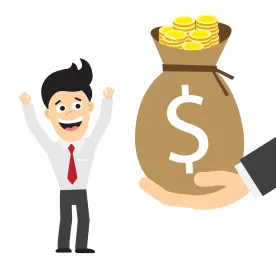The present and future impact of climate change, human rights violations, corruption, environmental, labour and regulatory violations and poor corporate governance on the quality of investments and the associated credit risks has spurred widespread recognition by the finance community of the importance of environmental, social and governance (ESG) considerations in their lending and investment activities.
This recognition has now resulted in the development of a plethora of sustainable finance and development initiatives, both internationally and nationally. The loan markets’ response is the joint recognition by the Loan Market Association (“LMA”), Loan Syndications and Trading Association (“LSTA”) and Asia Pacific Loan Market Association (“APLMA”) of two of the newest sustainable finance products in the market: “green loans” and “sustainability linked loans” (SLLs).
The Green Loan Principles (“GLP”) and the Sustainability Linked Loan Principles (“SLLP”) were jointly issued in 2018 and 2019 respectively by the LMA, the LSTA and the APLMA to establish frameworks for these sustainable finance products. On 5 May 2020, the LMA, the LSTA and the APLMA jointly issued Guidance on Green Loan Principles (“GLP Guidance”) and Guidance on Sustainability Linked Loan Principles (“SLLP Guidance”) which aim to address some of the most frequently asked questions raised in relation to green loans and SLLs. While green loans and SLLs both come under the umbrella of sustainable finance, it is important to note that they are different products and are governed by different principles.
What are Green Loans and SLLs?
Green loans are defined in the GLP as:
“any type of loan instrument made available exclusively to finance or re-finance, in whole or in part, new and/or existing eligible Green Projects. Green loans must align with the four core components of the GLP, as set out in the GLP”.
A “Green Project” is any project falling within the non-exhaustive categories of eligibility set out in the GLP (which include renewable energy, energy efficiency, pollution prevention and control and clean transportation) with the key determinant for qualifying as a “Green Project” being that the project which is being financed should provide clear environmental benefits. The four core components of a green loan are discussed in further detail below.
SLLs are defined in the SLLP as:
“…any types of loan instruments and/or contingent facilities (such as bonding lines, guarantee lines or letters of credit) which incentivise the borrower’s achievement of ambitious, predetermined sustainability performance objectives. The borrower’s sustainability performance is measured using sustainability performance targets (SPTs), as set against key performance indicators, external ratings and/or equivalent metrics and which measure improvements in the borrower’s sustainability profile”.
SLLs are sometimes also referred to as “ESG linked loans”, “sustainability improvement loans”, “KPI loans” and “SDG linked loans” and, perhaps in recognition of what some view as the overuse of jargon in this space, the SLLP Guidance encourages market participants to consistently refer to these products as “sustainability linked loans” or SLLs so as to build a common language and a greater understanding in the market.
The GLP Guidance and SLLP Guidance both note that a loan could technically qualify as both a green loan and an SLL (but that such instruments are rare).
Advantages of Green Loans and SLLs
The GLP Guidance and SLLP Guidance list a number of benefits that may incentivise borrowers and lenders to consider green loans and SLLs, including:
-
a positive impact on the environment and/or climate change mitigation and/or adaptation;
-
a positive impact on reputation and credibility;
-
building stronger, values-based relationships with stakeholders;
-
meeting regulatory and policy targets/commitments;
-
gaining access to a wider/more diverse pool of investors, particularly those seeking investment with a positive environmental or ESG focus; and
-
gaining access to new markets, and therefore providing greater resilience to market disruption caused by climate change and decreasing risk across portfolios (which will likely be a particular focus for lenders as a result of the current prolonged oil price crash).
One further and tangible benefit to SLLs is the potential to improve the pricing of the loan by meeting predetermined SPTs. While pricing improvements currently remain modest (typically between 2.5 to 3bps for investment grade lending), there is potential for these improvements to increase in the future if SLLs are afforded an improved prudential capital treatment by regulators. Readers should note however that legislative and regulatory efforts in this regard (to date, in the UK and the EU) are firmly in their infancy.
As noted in the SLLP Guidance, a failure to meet the agreed SPTs can result in an increase in the margin payable by the borrower on that loan. To avoid any inference that a lender could stand to benefit from the poor performance of a borrower towards its SPTs, lenders have taken measures to mitigate the reputational risk, including (a) committing to reinvest such premiums in other sustainability initiatives or (b) requiring the borrower to pay such premiums into a designated “ESG account”, which the borrower may only access for ESG purposes.
Green Loan Principles
Use of Proceeds
The proceeds of a green loan must be applied towards financing a Green Project (including other related and supporting expenditures, including R&D). A green loan may take the form of one or more tranches of a loan facility (but only those tranches, and not the entire loan facility, would be classified as a green loan). A revolving credit facility may be categorised as a green loan if the proceeds can be used for one or more identifiable Green Projects and the loan otherwise meets all of the GLPs.
Process for Project Evaluation and Selection
Borrowers will be required to demonstrate to their lenders that they have established an environmental sustainability strategy, and how the Green Project to be financed aligns with such strategy. In addition, borrowers will need to show the loan is in line with the lender’s lending criteria and policies.
The GLP Guidance confirms that projects that significantly improve the efficiency of utilisation of fossil fuels and projects undertaken by borrowers with low ESG ratings or exposure to controversial sectors or technologies (such as coal or nuclear energy) are potentially eligible for green loans, provided that, in the case of fossil fuel producers, the borrower has committed to an ambitious decarbonisation pathway reasonably considered to be aligned to the Paris Agreement and the project to be financed is aligned with the core components of the GLP (including disclosure and reporting).
Certain commercial banks have specifically excluded projects which improve the energy efficiency of fossil fuel production (such as carbon capture storage technology) and/or distribution from their eligibility criteria for green loans, it will be interesting to see if this confirmation in the GLP Guidance will have any bearing on banks’ lending policies, especially those banks committing to actively manage the transition path for high-carbon sectors. The GLP Guidance suggests that external review and increased disclosure obligations may be appropriate in relation to the sustainability benefits of those projects and their impact on the borrower’s overall sustainability strategy (which may also help the lender comply with its own sustainability policies and goals).
Proceeds of Green Loans and Reporting
The proceeds of a green loan will be required to be credited to a dedicated account or otherwise tracked by the borrower in an appropriate manner.
Borrowers will be required to update their lenders at least annually on the use of proceeds until the green loan is fully drawn, and as necessary thereafter in the event of certain material developments. The information to be reported should include:
-
a list of the Green Projects to which the green loan proceeds have been allocated;
-
a brief description of the projects and the amounts allocated; and
-
their expected impact.
When reporting on expected impact, the GLP recommend the use of qualitative performance indicators and, where feasible, quantitative performance measures (for example, energy capacity, electricity generation, greenhouse gas emissions reduced/avoided, resource efficiency etc.) and disclosure of the key underlying methodology and/or assumptions used in the quantitative determination.
The GLP Guidance notes that the parties should agree at the outset whether this information should be partially or fully reviewed by an external reviewer. External review (as opposed to self-certification by the borrower) is recommended where the lenders do not have a broad working knowledge of the borrower or if the borrower is not able to demonstrate sufficient internal expertise to confirm alignment of the green loan with the core components of the GLP.
Sustainability Linked Loan Principles
Relationship to Borrower’s Overall Sustainability Strategy
The key eligibility requirement for a borrower of an SLL is that it must have a sustainability strategy (and the SPTs proposed for any SLL will need to align with this strategy).
Performance Target Setting – Measuring the Sustainability of the Borrower’ Business
SPTs should apply over the life of the SLL and be “ambitious and meaningful” to the borrower’s business and should be tied to a sustainability improvement in relation to a predetermined performance target benchmark.
The SLLP notes that methodologies for selection of SPTs can include:
-
ESG metrics and targets included in the borrower’s sustainability strategies and/or policies;
-
external analysis to establish sector-specific ESG criteria and best-practice performance; and/or
-
verified industry metrics reported against frameworks, with verification or evaluation by civil society organisations or external reviewers who will determine if SPTs are ambitious for the borrower and that borrower’s industry, and/or align the SPTs to existing regulatory targets (such as those set out in the Paris Agreement).
The SLLP contains an appendix with examples of SPTs which includes energy efficiency, greenhouse gas emissions, renewable energy, water consumption, circular economy, biodiversity and other similar categories of sustainability and conservation.
In syndicate lending, a single lender (the “sustainability coordinator”) will typically lead the target-setting negotiations with the borrower. The SLLP Guidance highlights that this role should be limited and that the sustainability coordinator does not assume fiduciary duties to the rest of the syndicate by confirming documentation meets the SLLP on behalf of the other lenders.
Reporting
Borrowers should report on their SPTs at least once annually and are encouraged to provide details of any underlying methodology and/or assumptions (where known), as well as changes to such methodology. Public reporting is encouraged. The SLLP Guidance notes that there is no globally accepted methodology for reporting on SPTs; there are however several sustainability reporting methodologies and tools available in the market.
Review
The requirement for external review will be determined on a transaction-by-transaction basis. Lenders may be able to rely on public disclosures to verify performance against SPTs where the borrower is publicly traded.
The SLLP Guidance notes that factors which may suggest that self-certification by a borrower is appropriate are the presence of a dedicated sustainability team or sustainability personnel, a clear sustainability strategy, the availability of historical data on the relevant metrics and internal and/or external audit processes. Where a borrower must report SPT outcomes to a regulator in the ordinary course of its business, the regulator’s pecuniary penalties and reputational risk for the borrower in misreporting would ordinarily be sufficient to ensure integrity of the borrower’s data.
Greenwashing and Sustainability Washing
Both the GLP Guidance and SLLP Guidance specifically tackle the issue of “greenwashing” and “sustainability washing”, which is where a financing is held out as having green and/or sustainable credentials but such categorisation is misleading, inaccurate or inflated. This is a key concern for the sustainable finance community as any perception of such practices could undermine the integrity of green loans and SLLs, and therefore impact investor confidence. Close adherence to the GLP Guidance and SLLP Guidance and the principles underpinning each product is therefore advised in order to counter any allegations of “greenwashing” or “sustainability washing”.
The SLLP Guidance notes that “sustainability washing” can occur in two key ways:
-
SPTs that are not sufficiently ambitious or meaningful; or
-
inaccurate monitoring, measuring and disclosing of a borrower’s performance against SPTs.
Documentation
There is currently no template wording available for use in green loan or SLL documentation.
For green loan documentation, the GLP Guidance notes that particular attention should be paid to:
-
the purpose/use of proceeds provisions to ensure that the eligible categories of Green Project are set out;
-
the information undertakings/covenants to ensure that those relating to the Green Project(s) are clearly identifiable; and
-
the representation relating to the accuracy of information to ensure that it covers any reporting relating to the Green Project(s).
For SLL documentation, the focus will be on:
-
the definition and performance indicators of each SPT;
-
the mechanism for the measurement of the borrower’s improvement against a SPT;
-
what sources of information may be relied on for measuring SPTs; and
-
whether or not this information will be independently verified.
The GLP Guidance and SLLP Guidance leave it up to the parties to determine what will constitute a “green” or “sustainability” breach and whether such breach will trigger an event of default under the loan documentation. The GLP Guidance confirms that a loan should not be considered green from the date of any breach of the use of proceeds provisions, subject to any cure rights.
Sustainable Finance post-COVID-19 – will there be a “Green Recovery”?
There has been some debate over whether the increased focus on ESG considerations will continue in the wake of the COVID-19 pandemic as governments and markets seek to recover from the unprecedented contraction of economic activity caused by the crisis and oil price collapse.
While this remains to be seen, it is interesting to note that the EU Commission, when launching a consultation on its renewed sustainable finance strategy in April 2020, highlighted the important role it considers that sustainable finance should have in the recovery from the economic consequences of COVID-19:
“[t]he importance of a Renewed Sustainable Finance Strategy is highlighted through the ongoing COVID-19 crisis, which underscores some of the subtle links and risks associated with human activity, climate change, and biodiversity loss, as well as the subsequently critical need to strengthen the sustainability and resilience of our societies and economies”.
It seems likely that green loans and SLLs will continue to gain traction notwithstanding, and perhaps as a direct result of, the efforts to rebuild the global economy following the COVID-19 crisis.





 />i
/>i

